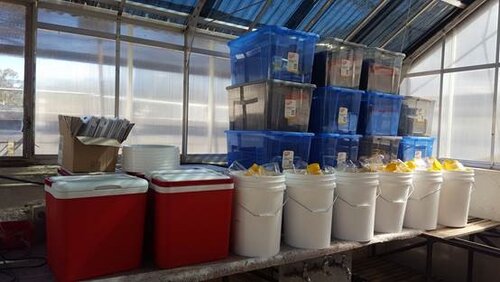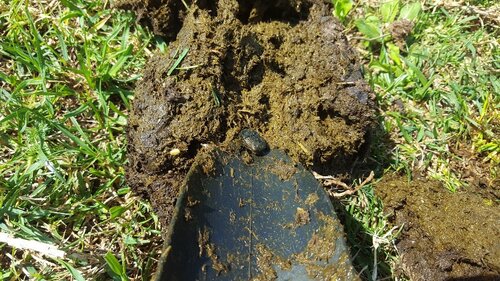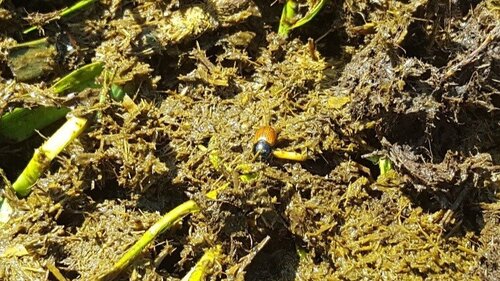EXPANSION OF MASS REARING
The University of New England (UNE) is expanding its role in the DBEE project. In addition to their monitoring, research and community engagement role the team at UNE have successfully bid for funding to expand their mass rearing capabilities at Armidale. The mass rearing at UNE will include controlled environment and outside hoop house rearing. The UNE team will work in cooperation with the team at Charles Sturt in Wagga Wagga. The availability of space and labour are key issues in mass rearing. The additional facility at UNE will increase the number of beetles that can be released by the DBEE project.
The beetles reared at UNE will partly consist of new species being introduced by DBEE project team at CSIRO and some populations of existing beetles. The highly experienced team at UNE are managed by Nigel Andrew with the initial rearing undertaken by Zac Hemmings and Behnaz Ghaedi. The team will soon be expanded to include a new technician and new postgraduate student.
The expansion of the project has been welcomed by the Geoff Gurr, who leads the DBEE mass rearing theme. Geoff has said that ‘the mass rearing facility in northern NSW will ease the logistical challenge of distributing beetles and UNE are ideally suited and experienced to run this high-tech facility’.
KYOGLE SHOW HAS PLENTY OF DUNG BEETLE ENTHUSIASTS
Interest in dung beetles has also been strong in north-east NSW. Travelling around setting up monitoring sites, Zac has been meeting enthusiastic producers and members of the community.
The Richmond Valley – Border Ranges Landcare Network are experienced at monitoring dung beetles. They will be moving forward and join the national survey using the DBEE monitoring protocols. They’re also managing a farmer nursery which has been inoculated with the French strain of O. vacca.
In September, Zac visited some properties between Armidale and Kyogle. After scrounging around in some dung found five species: the dwellers Aphodius fimetarius and Aphodius lividus, and three tunnellers, Liatongus militaris, Euoniticellus intermedius and the large Onitis viridulus. Zac says that ‘Onitis viridulus can be easily confused with Onitis pecuarius, with the distribution normally being an easy way to tell them apart. Unfortunately for me on this trip, I was in one of the few places where their ranges overlap so I had to break out the microscope’.
At a dairy farm north of Kyogle, producers Shane and Julia have been affected by the drought but have been managing the stock with their ‘mini-stock’ of dung beetles in mind. Zac found a similar collection there as the day before, with a few O. viridulus, some E. intermedius, and some A. fimetarius and A. lividus.
At the Kyogle show the dung beetle demonstrations at the Landcare stall got plenty of attention from adults and children. Zac had lots of questions from landholders about how to increase the number of dung beetles on their property and how to get new species for times when activity was low. ‘To my surprise lots of kids were interested in dung beetles, mainly looking at the larvae, but a few were willing to hold some of the live beetles I had on hand’ Zac said.
With so much enthusiasm for dung beetles in the area, talks are already under way for Zac to return in 2020 to present at some on-farm and off-farm dung beetle workshops. If you’re from the area and are interested in dung beetles, keep posted through the Border Ranges – Richmond Valley –Landcare Network.


